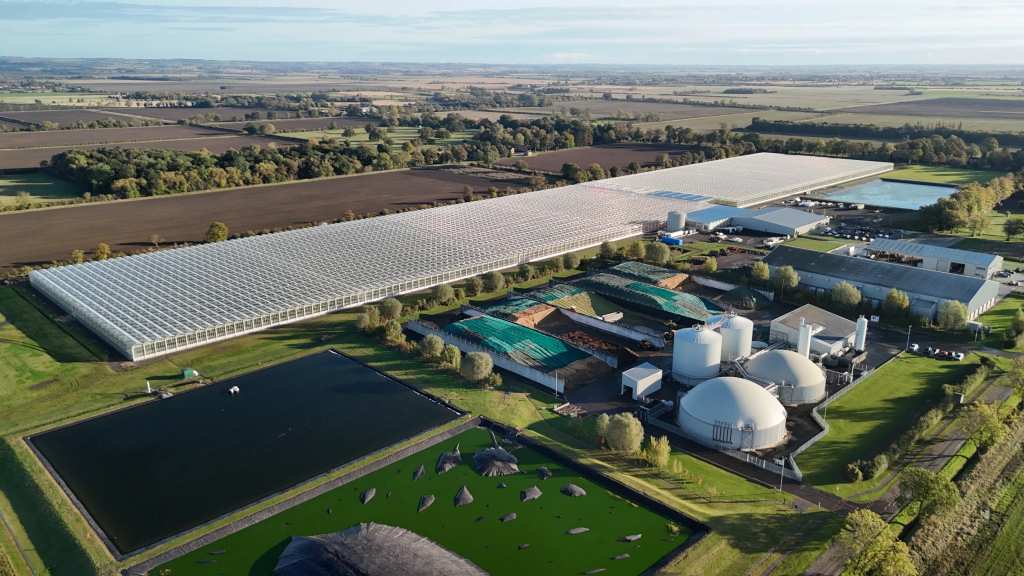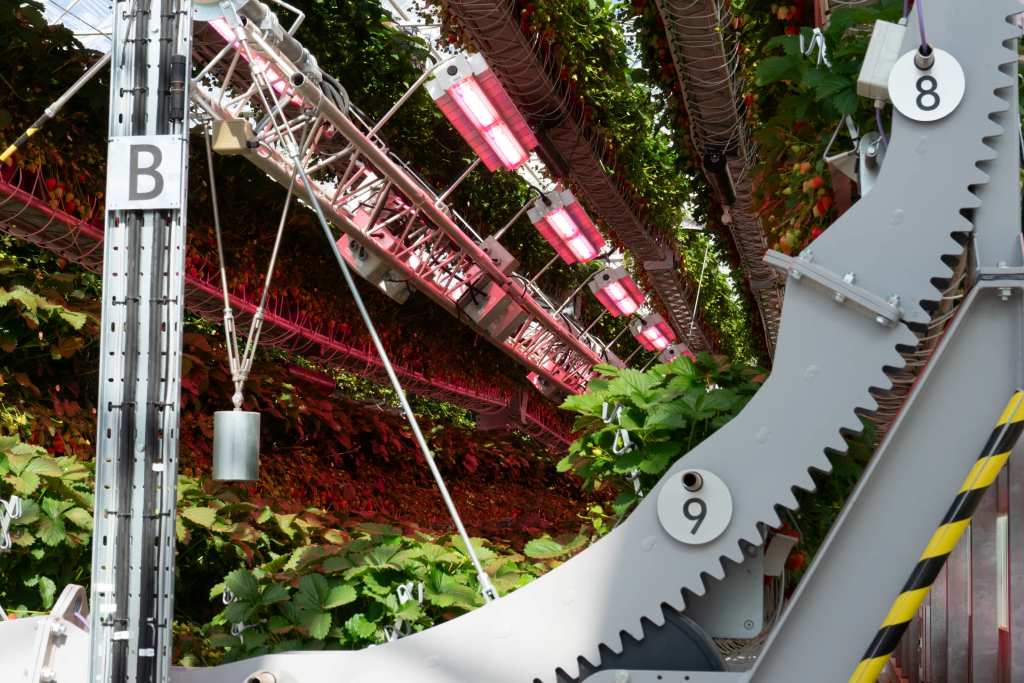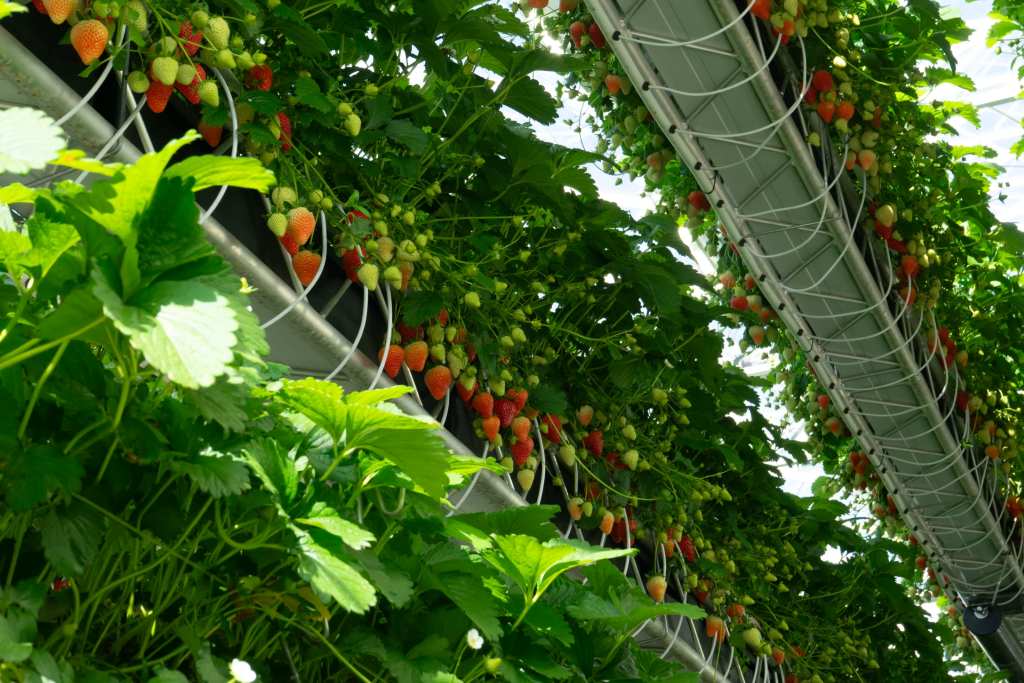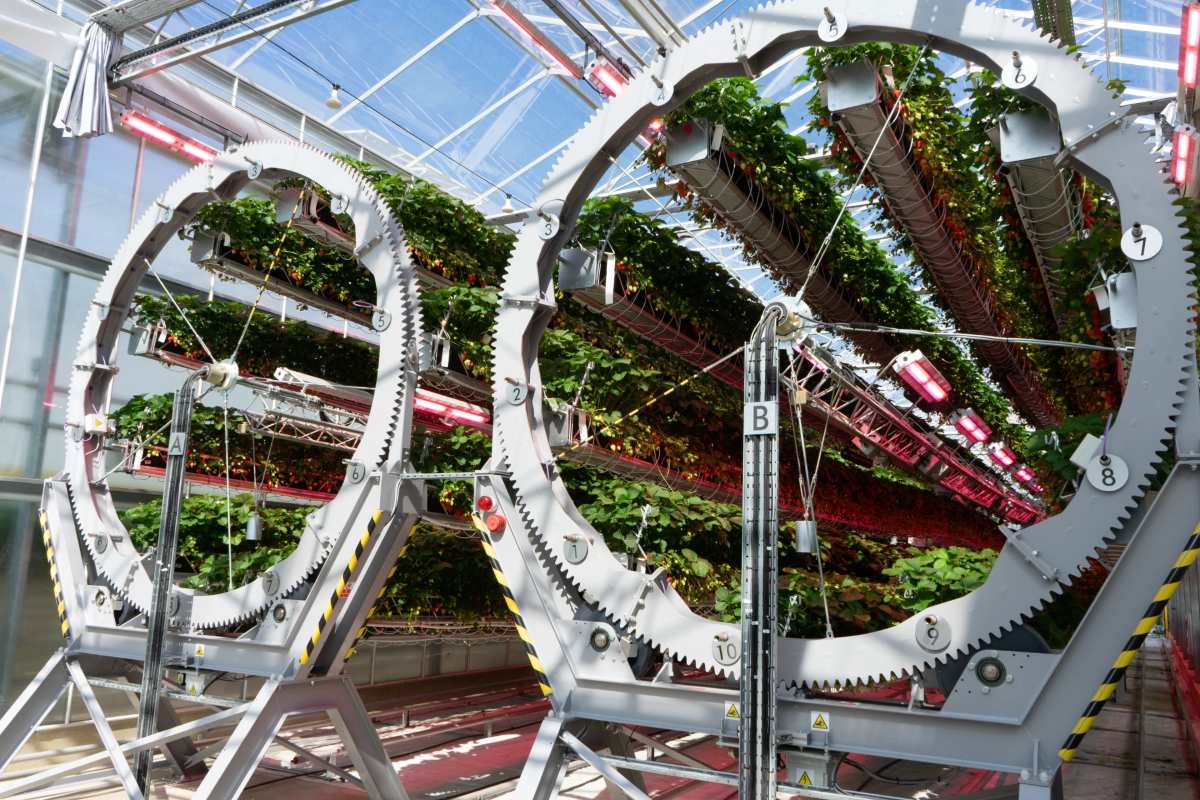UV robots, digesters and harvesting arms: this is how Dyson produces 1,250 tonnes of strawberries a year in Lincolnshire, United Kingdom.
- Robots harvest 200,000 strawberries a month.
- Anaerobic digesters generate energy and fertiliser.
- Minimal use of artificial light, irrigation with rainwater.
- Annual production: 1,250 tonnes of strawberries.
- Local cultivation = fewer transport emissions.
- Technology applied to agricultural efficiency.
Farms of the future?
In the rural heart of Lincolnshire, England, Dyson has built a greenhouse covering more than 105,000 square metres. This space houses an automated vertical farming operation capable of growing more than a million strawberry plants at the same time. The design is driven by a vision: to combine precision engineering with sustainability to revolutionise the way we produce food.

Cutting-edge technology for growing strawberries
The plants grow on rotating wheels 24 metres long and 5 metres high, which move slowly to ensure optimal sun exposure throughout the day. Each wheel weighs approximately 500 kilograms, supporting multiple rows of crops.
UV-emitting robots travel through the system eliminating pathogens without chemicals, while other robots release beneficial insects, such as ladybirds and parasitic wasps, to combat pests such as aphids in an environmentally friendly way.
When the fruit reaches its optimal ripeness, 16 robotic arms harvest it with precision. In a single month, the system has been able to harvest 200,000 strawberries without direct human intervention.
Renewable energy and closed cycle

One of the most innovative aspects of the system is its energy source: an on-site anaerobic digester. This equipment transforms organic waste from cereals into biogas, which is used to power turbines and generate electricity. The waste heat is used to maintain a stable temperature in the greenhouse.
In addition, the by-product of the process — known as digestate — is rich in nutrients and is returned to the fields as organic fertiliser, completing a closed nutrient and energy cycle.
Efficient use of water and light
The irrigation system uses rainwater collected from the greenhouse roof, which is 760 metres long. This approach significantly reduces the use of drinking water and dependence on external sources.

For lighting, the greenhouse prioritises natural sunlight, using minimal artificial lighting only when essential, which reduces energy consumption and prevents light fatigue in the plants.
Local production and reduced emissions
Thanks to this infrastructure, Dyson manages to produce 1,250 tonnes of strawberries per year within the United Kingdom, eliminating the need for imports from countries with warmer climates. This proximity significantly reduces CO₂ emissions associated with international transport, improving the carbon footprint of the final product.
Vertical and automated agriculture such as that proposed by Dyson represents a radical change in food production:
- It makes the most of the available space, allowing more to be grown with less land.
- It minimises the use of natural resources such as water and chemical fertilisers.
- It reduces dependence on pesticides and herbicides, improving the health of the ecosystem.
- It increases local food security by decentralising and shortening supply chains.
- It facilitates year-round cultivation, even in unfavourable climates.
- It integrates renewable energies, transforming waste into useful energy and closing the nutrient cycle.
This type of innovation demonstrates that technology and agriculture are not only compatible, but synergistic, and can play a key role in the fight against climate change and global food insecurity.

